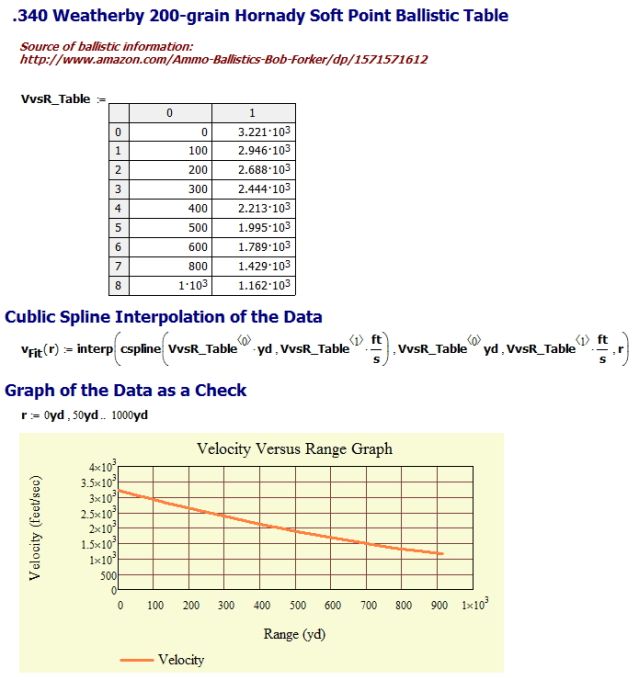Quote of the Day
Wisdom and experience are built from bricks made from the mud of failure.
— Mike Blue
I am working on a ballistic simulator and I was looking for some test data. While hunting up some data, I stumbled upon a bullet/cartridge combination that almost exactly had the specific muzzle velocity that made the following "rule of thumb" true -- at least with respect to the Pejsa ballistic model (discussed here). I first discussed this "rule of thumb" in this post.
To a rough approximation, the BC [ballistic coefficient] can be estimated as the fraction of 1000 yards over which a projectile loses half of its initial kinetic energy. In other words, a bullet with a BC of 0.300 should lose roughly half of its initial kinetic energy at a range of 300 yards.
My analysis showed that the approximation should be exact for a bullet with a muzzle velocity of 3224 feet/sec. By exact, I mean that the bullet should have lost 50% of it energy by the time it reaches a range equal to the product of the ballistic coefficient and 1000 yards. It turns out the Weatherby .340 200 grain Hornady Soft Point has a velocity of 3221 feet/second (note that the ".340" is really a .338). So this would be a good test of the approximation. Figure 1 shows my data setup and Figure 2 shows my analysis and the results.
My analysis shows that the approximation has less than a 3% error. This is well within the error that I expect for the ballistic coefficients and velocities listed in these tables (see this paper for an interesting discussion of these errors). So I consider this additional confirmation of my earlier result.



Pingback: 7mm Remington Magnum: Extreme Range Awesome or Not? | ballisticxlr
Hi Mark, I've been working my way through "Exterior Ballistics, The Remarkable Methods" by George Klimi and came across this reference:
"The ballistic coefficient of each bullet changes with velocity of the bullet as it flies"
Ref: http://www.exteriorballistics.com/ebexplained/5th/24.cfm
My initial understanding was that BCs were constant over the flight and apparently, I misunderstood that.
Hi Ronan,
This is a great question and deserves a very complete answer. Give me a couple more weeks to answer. My mother had a heart attack six weeks ago and died Sunday. I will have her affairs closed out in a couple of weeks and then I will be back to blogging.
mark
Mark,
I just read your above note. Sorry for the loss of your mother. Our parents get more precious as we and they age. Peace to all.